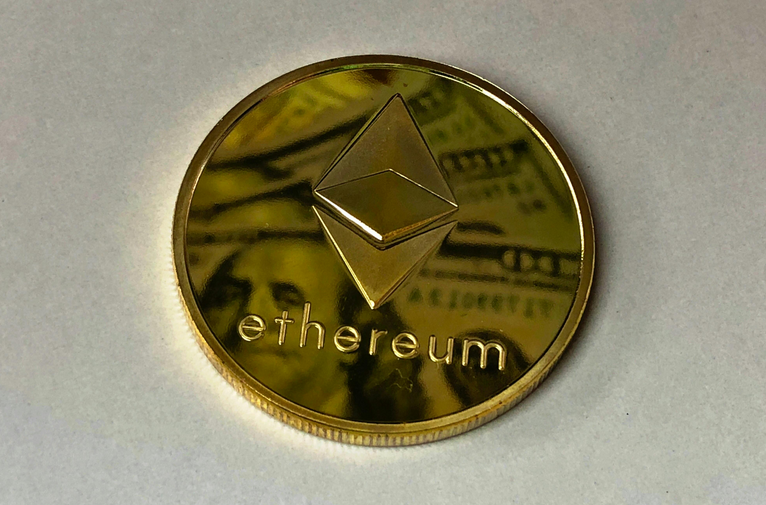Ethereum as a value indicator in decentralised content ecosystems
September 24, 2025

The value of Ethereum is a useful gauge for decentralised content networks. Looking at both market data and institutional insight helps reveal how blockchain media is evolving.
The gigabit-speed era demands more than just faster content. Decentralised networks powered by smart contracts are changing how media is distributed, monetised and governed. Ethereum’s price is no longer just a number; it’s a live indicator of how healthy and active Web3 content ecosystems really are. This also reflects the shift from Web2 platforms with centralised control toward open, community-driven infrastructure, where creators and audiences participate directly in value exchange.
Smart Contract Activity Aligned with Price Momentum
If you follow the Ethereum price movement, you’re already tracking the heartbeat of decentralised media. Institutional-grade analysis shows Ethereum climbed 18.6 per cent during August, driven by record-based ETF flows and company treasury acquisitions. This isn’t just speculation; it reflects growing confidence in using decentralised networks for media distribution and tokenised rights.
When price momentum rises, smart contract deployments usually follow. That means more activity in decentralised streaming, automated rights management and micropayments. This speed signals stronger network health and wider ecosystem use. It shows that creative platforms are treating Ethereum as infrastructure and not just an asset. A change in price can often lead to gauge in ascertaining investor psychology and operational use within decentralised media ecosystems worldwide. Developers often time their launches or upgrades around these moments of positive momentum. It takes advantage of higher liquidity and user engagement to maximise adoption.
Ethereum Price as a Proxy for Ecosystem Demand
While numerous variables affect blockchain-related streaming or content dissemination, fluctuations in Ethereum’s price serve as a clear indicator of liquidity and demand. As Binance Research notes, “Surging Ethereum price is usually the signal of rising investor demand for decentralised platforms, be they video-on-demand-centric, NFT-stories based or rights-clearance through smart contracts.”
These price moves will often align with rising smart contract deployments, higher transaction throughput and increased use of dApps that support content monetisation. For media decision-makers, these shifts act as a quick check on ecosystem health, showing whether tokenised solutions are gaining traction and liquidity is strong enough to support new distribution models.
Ethereum’s price is therefore more than a speculative number; it’s a key metric for gauging activity across global decentralised content networks.
Tracking Value Locked and Sector Development
The institutional view also highlights just how broad Ethereum’s activity has become. Total Value Locked (TVL) in decentralised finance spiked to around $91.5 billion in August, nearly reaching its late-2021 highs.
If you’re building in Web3, this number matters. As rising TVL means more capital is being put to work, showing that Ethereum’s infrastructure is being trusted for decentralised identity, micropayments and media-related protocols. The higher the TVL climbs, the stronger the signal that creators, platforms and investors are using Ethereum as more than just a speculative asset.
TVL growth usually comes with more transactions, more active smart contracts and more dApps being used at scale. This points to a network that is both maturing and resilient, exactly what’s needed to power innovations and tokenised rights, streaming payouts and automated licensing in global media distribution. Real-world examples include music streaming protocols that reward listeners with tokens or publishing platforms that let writers crowdfund and monetise their work directly through smart contracts.
Market Signals Translating to Content Utility
Ethereum’s market metrics reveal more than price action in the trading community. They show how healthy the network really is. Institutional investment and infrastructure upgrades are laying the groundwork for a decentralised media system that can support streaming, smart licensing and peer-to-peer content distribution at scale.
As Binance Research highlights, Ethereum’s growing dominance and high value-locked levels reflect both market positioning and real network use. For you, this means more reliable foundations for automated agreements, instant micropayments, and decentralised rights management, all without relying on central intermediaries.
Narratives, Institutional Flows and Media Innovation
According to insights analysis through the Insights Hub, the Ethereum ecosystem is more than driven by retail behaviour, as institutional flows and treasury allocations affect valuations and thus ecosystem confidence. For content platforms, these flows drive real decisions, from token launches to creator incentives and staking models, shaping the long term sustainability of the ecosystem. The unlinked mention of Binance here grounds the analysis, as it does through the extent of the exchanges, which are devoid of promotional voice.
The market dynamics of Ethereum offer clear insights into the health of decentralised media ecosystems. Through the use of smart contracts in streaming applications via token-based licenses, Ethereum’s TVL and price action become proxies for infrastructure adoption and investor sentiment. As institutional flows remain the drivers of narratives in the market, the ecosystem’s viewers can find a steady barometer in Ethereum and not of speculative gain, but of the emergent architecture of decentralised media.
This analysis can help you to see how Ethereum’s building blocks are powering media-tech innovation, without offering financial advice. Keeping an eye on these signals today can help you anticipate where decentralised content is heading next.
Other posts by :
- Bank: SES outperforming
- AST SpaceMobile confirms 2026 launch schedule
- AST SpaceMobile: “Good for indoor reception”
- EchoStar booms on SpaceX holding
- Norway wants a satellite constellation
- Crossroads backs AST SpaceMobile
- FCC examines SpaceX’s 15,000 sat-constellation plan
- EchoStar: “Severe uncertainty” led to spectrum sales
- Netflix gets downgrade on Warner Bros move
